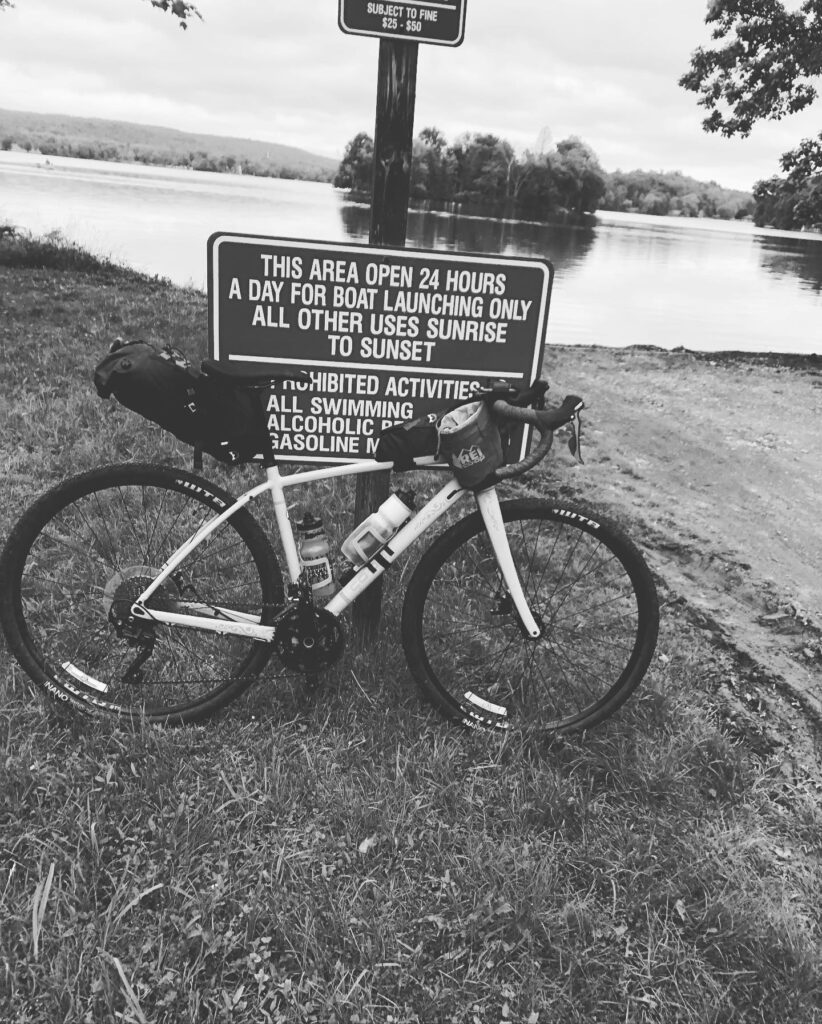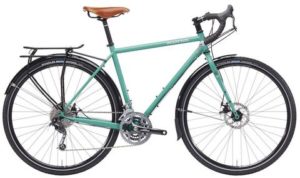Bike Women Bike
Women on Bikes! [Bicycles, that is!]
Bike Maintenance
 Taking Care of Your Bike: Bike Maintenance
Taking Care of Your Bike: Bike Maintenance
You know how to ride a bike but do you know how to diagnose a problem with one? Be sure that your bike is well tuned before you set off on your day of fun or exercise. It can prevent problems later.
Before you leave the store with your new bike, purchase a tool kit. Many bike shop owners will suggest this but you need to know so you can be prepared if they do not. Regular maintenance checks will keep your bike operating in perfect condition for years to come. It starts with purchasing a sturdy reputable bike but ends with you doing your part before and after each bike ride.
Some bikes require more maintenance than others. A mountain bike stands to have more potential for maintenance needs than a bike that you ride for recreation through the neighborhood. Still, making a quick check of your bike parts cant hurt even for an occasional rider.
What to Check on Your Bike
What do you check on your car? Unless you have a Flintstone car from the Stone Age, you’ll need to maintain the brakes. On a bike, the brake pads connect with the metal frame of the wheel when you push the brake levers on the handlebars. It doesn’t let you stop on a dime, but good brake pads slow you down so you can put your feet down and stop. Brake pads that connect with the tire ruin the pads and the rubber on the tire not to mention the fact that you could be in for one nasty accident because you have the potential then to actually stop on a dime.
Don’t forget to check your wheels. Tire pressure is important especially if you carry extra weight like books or a child. Improperly inflated tires can lead to traffic accidents. Don’t forget the tread. A worn tire needs to be replaced immediately.
Check your seat. Make sure it is tightened and at the right height for your ride. A pair of wrenches can be sued to quickly tighten a wobbly seat.
Avoid a thick layer of grime on your bike chain. Chains that have trouble gripping the gears can slip and leave you in a pickle. Prop the back wheel up on a stand and spin it as you change gears to be sure there is no problem here. Clean your bike chain after every ride.
Don’t neglect the bike frame. If it is rusty there is a chance of a weak spot forming there. One way to avoid problems with the frame is to keep your bike indoors when not in use or covered with a tarp if you house it outside.
You wouldn’t ride around in an unsafe car would you? Take care of your bike just the same so protect you and others when you are bike riding.
Bike Accessories
Bike Accessories: 5 Gadgets for the Road
If there’s one thing that we like its gadgets. Gadgets make our lives easier to manage. When you bike ride, gadgets are both necessary and fun. Here are some must-have gadgets for the bike rider.
Where are you going to ride your bike? Maybe you can ride through the trails for hours on end seeing the land. Your accessories will differ slightly from someone who rides for 45 minutes through the neighborhood or goes to the park for a leisurely ride with the family.
1. Bike rack. If you want to explore different locations, you’ll need some way to get your bike there besides riding it. Your bike rack needs to be able to carry more than one bike especially if you ride with family. For competitors, you can bring a spare bike for practice or in case of problems. What you are looking for is one that secures the bikes without too much wiggling of the wheels or handlebars. If you choose a rack that sits on top of your car remember the increased height when going under overpasses or through tunnels.
2. Bike computer. Some might argue how helpful this is but if you like to track your progress it is a useful tool. These computers track mileage, trip time, clock time and speed to name a few. You can go simple or fancy depending on the stats you want to measure.
3. Water bottle clip. Many bikes come standard with this but if not, add one. Just as with any other form of exercise you need to stay hydrated. If you were ever in an accident, water will come in handy.
4. Bike pedal clips. Bike clips keep you your foot from slipping when you ride. For a casual rider, the clips may frighten them because it increases your reaction time when trying to stop. You have to slide your foot out of the clip before touching down. During a long ride, the clips can give tired feet a rest.
5. Bike panniers. This is the bag for your bike to carry necessary items. On a long rigorous ride or a family ride, this bag can be stocked with a first aid kit, took kit, snacks, a jacket and your cell phone. Wearing a purse or other bag prone to shifting can unbalance you and cause an accident. Using this accessory frees you up to move easily and also gives you a place to store things you want to carry with you.
Want to trick out your bike? Here are a few suggestions for accessories that come in handy. There are more to choose from for fun if you want convenience.
Choosing a Bicycle Seat
 Bike riding can be fun but that fun will become irrelevant if you are uncomfortable. The one part of the bicycle that riders complain about most is the seat. If the butt is not feeling good, nothing else matters.
Bike riding can be fun but that fun will become irrelevant if you are uncomfortable. The one part of the bicycle that riders complain about most is the seat. If the butt is not feeling good, nothing else matters.
When you buy a bicycle, the seat is not missing. You will get a seat but it wont necessarily be the seat that is best for you. Don’t be afraid to replace it. In fact, if you don’t replace it, your bottom will pay the price.
1. Take a look at your bottom. This is not a joke. Most bicycle seats are small and quite firm as a standard. Competitive cyclists like these seats because there is less movement as you pedal. Constant rubbing can cause chafing which is not good for long rides or any ride at all. If you are fuller in the rear, a wider or softer seat may be in order.
 2. Examine the seat shape. Most seats have the same basic shape but there are subtle differences that are important. Seats that slope down on the sides do not support larger bottoms. It is hard on the tail bone and your lower back. Some seats look more like butterfly wings and provide more support by sloping up slightly. Seats with a center channel helps to keep you stationary on your bike without a lot of movement from side to side.
2. Examine the seat shape. Most seats have the same basic shape but there are subtle differences that are important. Seats that slope down on the sides do not support larger bottoms. It is hard on the tail bone and your lower back. Some seats look more like butterfly wings and provide more support by sloping up slightly. Seats with a center channel helps to keep you stationary on your bike without a lot of movement from side to side.
3. DON’T Consider a gel seat. Maybe a bigger seat is not the answer especially if speed is your choice. A larger seat makes it harder to pedal faster. Seats are narrow in front for that reason. If the seat fits your bottom and the shape is fine, adding a gel seat can keep your bottom cushioned on longer rides for greater comfort BUT, they often will result in sores.
 4. Learn to adjust your seat. Sometimes the problem is the height of the seat. A seat that is too high means you are straining to reach the pedals. This downward pressure puts more pressure on your bottom on that seat. Can you imagine how much that would hurt? Adjust your bicycle seat so that you can touch the pedals and still maintain a ninety degree angle with your body as you pedal. The other seat adjustment is the tilt of the seat. If you look closely at your seat, it can be adjusted to be level or tilted up or down. Make sure the tilt is not uncomfortable.
4. Learn to adjust your seat. Sometimes the problem is the height of the seat. A seat that is too high means you are straining to reach the pedals. This downward pressure puts more pressure on your bottom on that seat. Can you imagine how much that would hurt? Adjust your bicycle seat so that you can touch the pedals and still maintain a ninety degree angle with your body as you pedal. The other seat adjustment is the tilt of the seat. If you look closely at your seat, it can be adjusted to be level or tilted up or down. Make sure the tilt is not uncomfortable.
If the seat is still too hard or it hurts, then look at other possible solutions.
5. What are your riding needs? If you are just riding on occasional outings, a wider seat is acceptable. You aren’t trying to pick up speed or win a race. A narrower seat helps with maintaining speed in competition. A small hard seat can put bumps and bruises on your butt if you are riding over uneven terrain.
The bottom line is that you have to RIDE to condition your butt to the seat. EVERY single seat will be uncomfortable for a while. I personally prefer narrow seats that have a hole in the middle and and slightly cushioned. When I biked across the USA, I found that my butt started getting uncomfortable around 50 or 60 miles. NOW, not being in touring shape, it starts getting uncomfortable around 15 miles. I KNOW that the more I ride, the longer it will take to be uncomfortable.
A properly fitted bicycle seat is important for all riders. Shop well now to avoid lots of pain later.
Anatomy of a Bicycle
 Its always interesting to know how things work. With bicycles, knowing how they work can help you when it comes time to fix yours. The workings of all bicycles are basically the same. What differ are the materials used to build the parts.
Its always interesting to know how things work. With bicycles, knowing how they work can help you when it comes time to fix yours. The workings of all bicycles are basically the same. What differ are the materials used to build the parts.
1. Frame. This is the main component of a bicycle. It is the frame that all of the other parts join to in order to complete the bike. The frame is one piece construction and is tubular not solid. As you learn about other parts you’ll see why this is so.
2. Handlebars. It used to be that all handlebars looked like ram horns. You placed your hands on the top to rest your back and the bottom of the curl to go faster because you were more aerodynamic in that position. The handlebars fit into the front part of the frame called the head tube.
3. Bicycle seat. Seats come in all shapes and sizes for a bicycle. The most common shape looks like a banana with hips. The bicycle seat is mounted on a tubular stem that fits inside the bike frame through the seat tube. Bicycles may or may not have a top tube connecting the seat tube to the head tube. It used to be that girls bikes didn’t have this bar to prevent injuries.
4. Wheels. A bicycle has two wheels of varying diameter depending on the type of bike it is. The rear wheel is attached to the bike frame by the chain stay. The front wheel is attached to the frame with a fork attachment that slips into the bottom of the head tube. Some bikes have the fork welded to the frame as a single piece. The wheel itself is a circular metal frame that maintains its shape with spokes that attach to a central hub. The wheel is covered with a rubber tire and an inner tube inside it.
5. Pedals. How else are you going to make your bike move? The pedals attach at the bottom bracket. The pedals and wheels are connected to each other through gears and a series of chains. Pedals are wide enough for a foot and usually contain grooves to grip the shoe of the wearer. Some bicycles have pedal clips to keep feet from slipping as you ride.
6. Cables. The cables run along the bike frame from the handlebars to the brakes and the gears. The cables are usually attached to the frame to avoid accidents. With the handlebars, you can stop your bike and change gears because of this network of cables.
That’s your bike in a nutshell. It is a simple piece of machinery that provides an efficient form of transportation.
Weights Cycling
 Weights and Cycling: Increased Performance
Weights and Cycling: Increased Performance
How do you get better at an exercise? For one, you consistently perform it. On the other hand, you can increase your performance with weight training. This is important for competitive cyclists and also for fitness buffs who want to use cycling for getting into shape.
Fitness experts and doctors recommend weight training for all adults regardless of age. Weight training builds muscle which increases your body’s fat burning potential. Weight trainers experience the benefits even while they sleep. Your bones are also strengthened by weight bearing exercises which is good news for older adults especially women who suffer from osteoporosis.
Weight training exercises for cyclists
When you do any form of exercise whether weight training or cycling, a warm up and a cool down along with a stretch is really important. The warm up gets the muscles in the mood for exercise and makes the muscles more susceptible to stretching. The cool down lowers your heart rate to normal and allows you to get a good stretch out of your muscles to avoid major soreness later.
If you have recently taking up bicycling you’ll notice that your legs do the majority of the work. You feel the burn in your calves, quadriceps and hamstrings. As you build muscle endurance, the burning goes away because the muscle works more efficiently and doesn’t build up lactic acid as quickly. Training those muscles through work with weight machines and free weights will help you out.
1. Squats this is the quintessential exercise for the lower body. Squats work the abdominal area, the butt, the quadriceps, hamstrings and the gastroc (calf muscle). Use free weights on your shoulders or a barbell. Focus on your lower body as you lower slowly and push back up to starting position through your heels.
2. Calf raises you can stand on an aerobic step with or without weights in your hand. With your heels off the step, rise up as high as you can onto your toes. Hold and return to start position. Positioning the heels off of the step keeps the tension in the muscle throughout the movement.
 3. Leg lifts this exercise works the quadriceps muscle. Your quads do a lot of work when pushing up a hill on your bicycle. Use a leg extension machine to perform this exercise properly. A lower weight with higher repetitions increases endurance.
3. Leg lifts this exercise works the quadriceps muscle. Your quads do a lot of work when pushing up a hill on your bicycle. Use a leg extension machine to perform this exercise properly. A lower weight with higher repetitions increases endurance.
4. Hanging leg lifts the target here is your upper and lower abs. they work to raise your legs as you pedal. Without being on the floor, the focus is on your midsection to do the work of lifting your legs to perform the exercise. Use a hanging frame at the gym or even the monkey bars at the neighborhood park. If it is too hard to lift your legs straight out, start with lifting your knees into your chest while squeezing your abdominal muscles.
Want a smoother ride on your bike? Take up weight training to prepare your legs for a vigorous bike ride.






